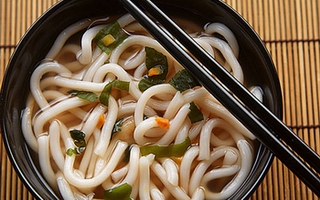Molecular gastronomy, fancy cupcakes, Korean tacos? So, so 2012.
The new year is always the time when prognosticators of all stripes decide what's in, what's out and, most intriguing of all, what's next. Will we eat more Asian-influenced sandwiches and less Asian fusion? More Latin American flair, with a focus on Peru and Brazil? What influence will the economy, the growing number of farmers markets and our time-crunched lives have on what we eat?
"We are always looking for new versions of things that we already know," says Harry Balzer, who has been watching what America eats for more than 30 years as a senior analyst with NPD market researchers. "We're explorers, but we're not Christopher Columbus.
"Where are the things that could have the greatest impact? They're in the things that we eat the most often," he says: sandwiches, vegetables and fruit.

Here's our forecast based on the buzz among prognosticators we talked with:
Heirloom chicken:
Like heirloom turkeys and heritage pigs before it, now may be chicken's turn to get attention. "We'll begin calling chicken by their varieties and, maybe, begin noticing the difference in flavors," says Clark Wolf, a restaurant consultant and trend spotter. In fact, Bret Thorn, senior food editor at Nation's Restaurant News, said it's here, pointing to an emerging class of high-quality fast-casual restaurants like Bantam & Biddy in Atlanta that celebrate heritage chicken.
Good, and good for you:
"Vegetables will continue to move to the center of the plate, catering to vegetarians, vegans, flexitarians, foodies and nutrition-conscious carnivores alike," says David Sprinkle, research director of consumer market researcher Packaged Facts.
Kale sits atop the greens heap now (you ate lots of crispy chips last year, didn't you?) and may be joined by Brussels sprouts and more. "It's not always easy to convince a consumer, especially a mainstream consumer, that a vegetable dish is going to have flavor and interest and innovation," says Mary Chapman of Technomic, a food service research and consulting firm. "But then you look at a menu like the Cheesecake Factory that has kale on one of their salads (and patrons think), 'Maybe I would be willing to try it there, and then I know what to do with it.'"
Baobab, a coconut-size fruit loaded with vitamin C, fiber and calcium, could be the next superfruit, predicts Josh Schonwald, author of "The Taste of Tomorrow."
Regional cooking:
The continuing emphasis on local and seasonal foods will, Wolf predicts, lead toward a local, seasonal and more distinctive regional style of cooking.
Techno-shoppers:
Texting while shopping? Why not. According to The Food Marketing Institute, 52 percent of consumers use technology in their grocery shopping, 32 percent are using online coupons, while a nearly equal amount (31 percent) use mobile technology when grocery shopping to make shopping lists, find recipes or research products.
Greek yogurt, part II:
Look for Greek yogurt dressings, dips, sauces, smoothies, soda and even cheesecakes with Mediterranean ingredient garnishes. "Keep an eye out for me-too promotion of other regional/national yogurt styles (such as New Zealand yogurt)," Sprinkle says.
Look for udon, soba, cellophane and rice noodles to show up in hearty layered bowls, fragrant soups and even mixed-texture salads, not only in a burgeoning number of big-city noodle shops but in seafood and varied-menu restaurants as well, Technomic researchers say.
Tummy time:
"This is going to continue being a trend for how we define health, moving from avoidance of harmful substances to adding beneficials to, now, digestive health. ... The question is, will it be gluten or will it be probiotics?" says Balzer.
Molecular gastronomy:
"In many ways the No. 1 trend is the rather public demise of molecular poo-poo," Wolf says. "Enough. Fine. Time's up."
High-end Bordeaux:
"I hate to say it, but Bordeaux is out right now. Pricing has gotten extremely high," says Evan Goldstein, a master sommelier, wine writer and president of Full Circle Wine Solutions in San Carlos, Calif.
Fast-food favorites:
Mini-burgers, Korean tacos, fancy cupcakes: Foodies may call them "passe, but there are plenty of people who are still loving them," Chapman says.
Packing the pantry:
When the economic downturn hit, did you really need five boxes of pasta, and 10 cans of tuna? "The biggest collector of food in this country is the American home," says Balzer, who watched as we readjusted pantry inventory levels in 2012. "People still ate, but their volumes were not being seen in supermarket sales because people were using (items on hand). Perhaps we will restock our inventories as the economy picks up."
Liquid sugar:
"Consumption (of sugary sodas and fruit juice) will continue a downward trend, though fresh squeezed/pressed juices with help make a fresh case for fruit juice," Sprinkle says.





